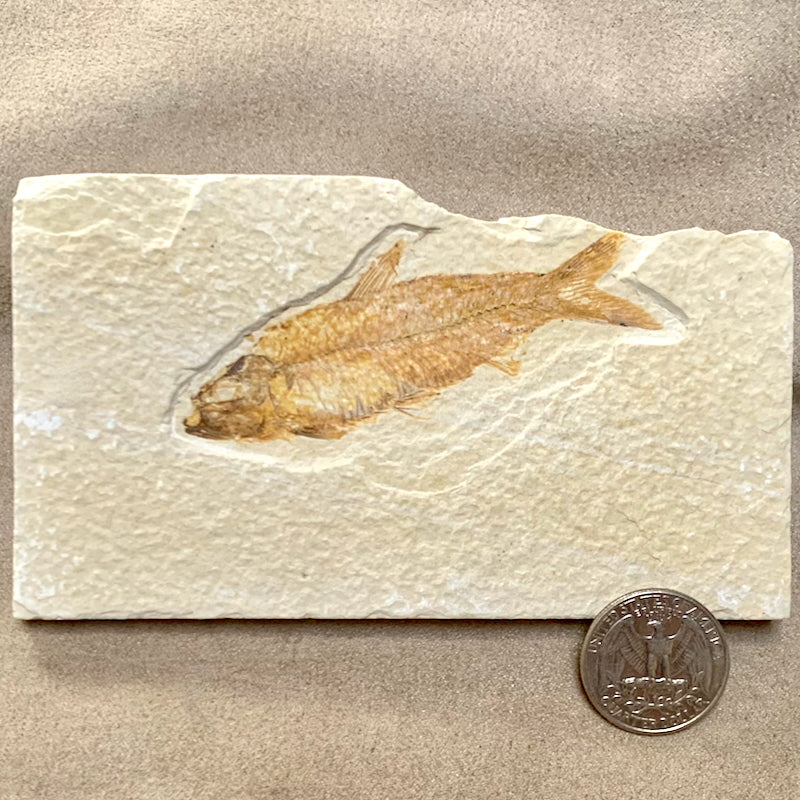Fossil Fish Knightia (Wyoming)
- Regular
- $20.00
- Sale
- $20.00
- Regular
- Unit Price
- per
Slab with fossil fish Knightia sp., about 50 million years old, from the Green River Formation, Fossil Lake, Wyoming.
Large cabinet specimen: About 4.9" x 2.8" x 0.35" (125mm x 70mm x 8mm)
55 million years ago ancient Fossil Lake existed in what is now southwest Wyoming. Of its estimated maximum extent of 930 square miles, approximately 500 square miles of sediments remain. The 230 square miles across the center of the ancient lakebed contain exceptionally fossiliferous sediments and associated geologic features including deltas, beaches, springs, ad rocks from center and near-shore environments.
The unusual chemistry of Fossil Lake created conditions that prevented decay and scavenging, while alternating layers of limestone and organic matter accumulated. The resulting laminated limestones contain the highest concentration of articulated fossil fish in the world. These fish, with other fossilized aquatic organisms and associated geologic features, make Fossil Lake the world's best Paleocene record of a freshwater lake ecosystem.
Fossil Lake sediments contain the world's most diverse and densely fossiliferous Eocene aquatic fossil assemblage. Since its discovery in the 1870s more than a million perfectly preserved fossil fish have been recovered. Preserved with the fish in the laminated limestone is a complete ancient aquatic ecosystem: cyanobacteria, plants, insects, amphibians, alligators, turtles, birds and mammals, including the oldest pantolestid (otter-like animal).




